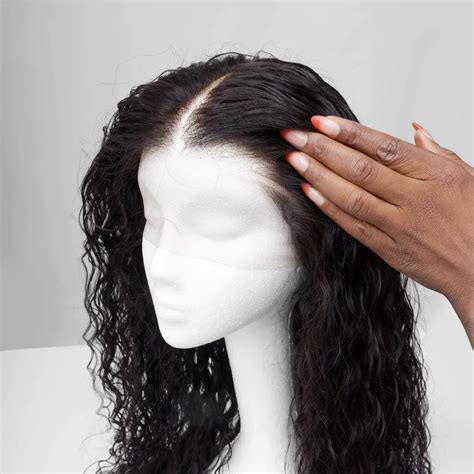Introduction
Front lace wigs are becoming increasingly popular due to their natural appearance, versatility, and protective benefits. As the demand for these stylish wigs continues to grow, it’s crucial to understand everything you need to know about front lace wigs before making a purchase.

Types of Front Lace Wigs
1. Full Lace Wigs
These wigs have a lace cap that covers the entire head, providing the most natural-looking hairline and versatility for styling.
2. Frontal Lace Wigs
These wigs have a lace cap that extends only across the front of the head, with the rest of the wig made of a more traditional material. They offer a natural-looking hairline and can be styled in various ways.
3. Lace Closure Wigs
These wigs have a small lace closure that covers the top of the head, blending with the rest of the hair. They provide a more secure fit than lace frontal wigs and can be used to create specific hairstyles, such as ponytails.
Benefits of Front Lace Wigs
1. Natural Appearance: Lace wigs mimic the natural growth pattern of hair, giving them an incredibly realistic look.
2. Versatility: Front lace wigs can be styled in countless ways, from sleek buns to voluminous curls, allowing you to change your look effortlessly.
3. Protective: Wigs can help protect your natural hair from damage caused by heat styling, chemical treatments, and environmental factors.
4. Durable: Well-maintained front lace wigs can last for several years with proper care and maintenance.
Choosing the Right Wig
1. Hair Type: Choose a wig that matches your natural hair texture and density to achieve a seamless blend.
2. Cap Size: Measure your head circumference to determine the correct wig cap size. An ill-fitting cap can lead to discomfort or slippage.
3. Hair Length and Density: Consider your preferred length and density when choosing a wig. Longer wigs with higher density will require more maintenance.
Installing and Styling
1. Installation:
- Prepare your natural hair by braiding it down or using a wig cap.
- Apply adhesive around the hairline and place the wig on your head.
- Secure the wig using wig clips or bands.
2. Styling:
- Use wide-tooth combs to detangle the wig and prevent breakage.
- Apply heat protectant before using hot styling tools.
- Avoid excessive brushing, which can damage the lace.
Maintenance and Care
1. Cleaning:
- Wash the wig every 1-2 weeks using a gentle shampoo and conditioner.
- Avoid using harsh detergents or excessive heat.
2. Drying:
- Air-dry the wig by placing it on a wig stand or towel.
- Do not use a blow dryer, as it can damage the fibers.
3. Storage:
- Store the wig in a breathable bag or box to prevent tangles and protect it from dust.
Tips and Tricks
1. Use Hairspray: Spray hairspray on the lace to minimize flyaways and create a more natural look.
2. Detangle Regularly: Use a wide-tooth comb or detangling brush to prevent tangles and maintain the wig’s appearance.
3. Avoid Heat Damage: Limit the use of hot styling tools and always apply heat protectant before using them.
Why Front Lace Wigs Matter
1. Improved Self-Esteem: Front lace wigs can boost self-confidence by enhancing hair appearance and allowing individuals to express their style.
2. Hair Protection: Wigs protect natural hair from damage caused by harsh styling practices and environmental factors.
3. Convenience: Wigs provide a quick and easy way to change your hairstyle without the commitment or maintenance required for natural hair.
Conclusion
Front lace wigs offer a wide range of benefits, from enhancing your appearance to protecting your natural hair. By understanding the different types, installation, styling, and maintenance techniques, you can choose the perfect wig that meets your needs and elevates your style.
